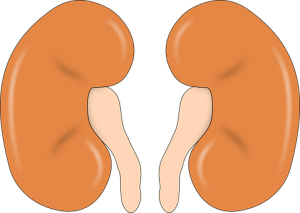A recent study showed that subjects with chronic kidney disease (Chronic Kidney Disease, CKD) are at higher risk of developing eye disorders and of visual impairmenteven of a serious nature.
Furthermore, it has been observed that in patients with CKD and visual impairment, the more severe the functional impairment of the kidney, the more severe the anomalies diagnosed as dependent of the retina.
What the connection is between diseases of the eye and the kidney is not entirely clear to date, however, it may depend on the fact that these organs share substantial physiological and developmental mechanisms.
Eye diseases and chronic kidney disease: causes
Some of the factors that expose individuals with chronic kidney disease at a higher risk of eye diseases are:
–pathological conditionssuch as diabetes and hypertension;
–metabolic disorders associated with CKD, such as oxidative stress;
–conditions of uraemia and anaemia;
–treatments for the treatment of CKDsuch as steroid therapies and dialysis.
There are also certain genetic mutations that lead to the onset of oculo-renal syndromes, i.e. pathological conditions affecting both the eye and the kidney, such as WAGR syndromes (Wilms tumour syndrome - aniridia - genitourinary abnormalities - mental retardation), Alport, tubulointerstitial nephritis syndrome and uveitis.

Eye diseases associated with chronic kidney disease
The eye diseases most frequently observed in individuals with CKD are:
-diabetic retinopathya microvascular lesion of the retina, commonly observed in patients with diabetes mellitus;
-senile macular degenerationa chronic progressive disease that is one of the most common causes of visual impairment globally and is three times more common in CKD sufferers;
-cataractan alteration due to opacification of the crystalline lens;
-glaucoma, an optic neuropathy leading to a reduced visual field;
- Retinal vein occlusion, which consists of obstruction of the retinal vein by a thrombus and leads to sudden but painless loss of visual function;
-hypertensive retinopathya category that encompasses a wide range of retinal vascular changes, usually observed in subjects with elevated blood pressure.
Eye Health and End-Stage Kidney Disease (ESKD)
The risk of developing eye disease and visual impairment is further increased in individuals with the most severe forms of CKD, and particularly in those individuals who are forced to resort to the dialysis.
In these cases, the increased risk of developing eye diseases and vision disorders may be due to the side effects of dialysis itself, the harmful effects of theuremia to the conjunctiva, cornea, retina and macula, and to the presence of further pathologies which are often present in patients already suffering from severe CKD.
The most common eye diseases found in patients undergoing dialysis are:
-optical neuropathy;
-exudative retinal detachment;
-metastatic calcification.
In subjects forced to resort to kidney transplant and in cases of renal diseases of autoimmune origin, an increased likelihood of developing eye diseases may also be linked to the side effects of immunosuppressive therapies based on steroids.
Consequences of visual impairment on quality of life
In the general population, visual deficits have been associated with a wide range of complicationsincluding a higher mortality rate and an increased risk of developing cardiovascular disease and depression. The consequences of low vision also greatly affect the quality of life of those affected, making participation in normal daily activities more difficult and reducing independence and self-sufficiency, with serious repercussions on the emotional, psychological, social and working spheres of these individuals.
Prevention of eye diseases
Subjecting people with kidney disease to a programme of regular eye examinations could be a winning strategy, as it would allow early identification of the onset of complications and their appropriate treatment. Special attention should be paid to the subjects undergoing dialysisin which regular visual acuity checks, cataract screening and constant monitoring of intraocular pressure would be useful. In subjects at risk for elevated intraocular pressure, the use of specific topical drugs or, in some cases, recourse to peritoneal dialysis may also be indicated.
Source:
Nusinovici S. et al, Vision Impairment in CKD Patients: Epidemiology, Mechanisms, Differential Diagnoses, and Prevention. Am J Kidney Dis. 2019; 73(6):846-857.
Dr. Carmelo Chines
Direttore responsabile
